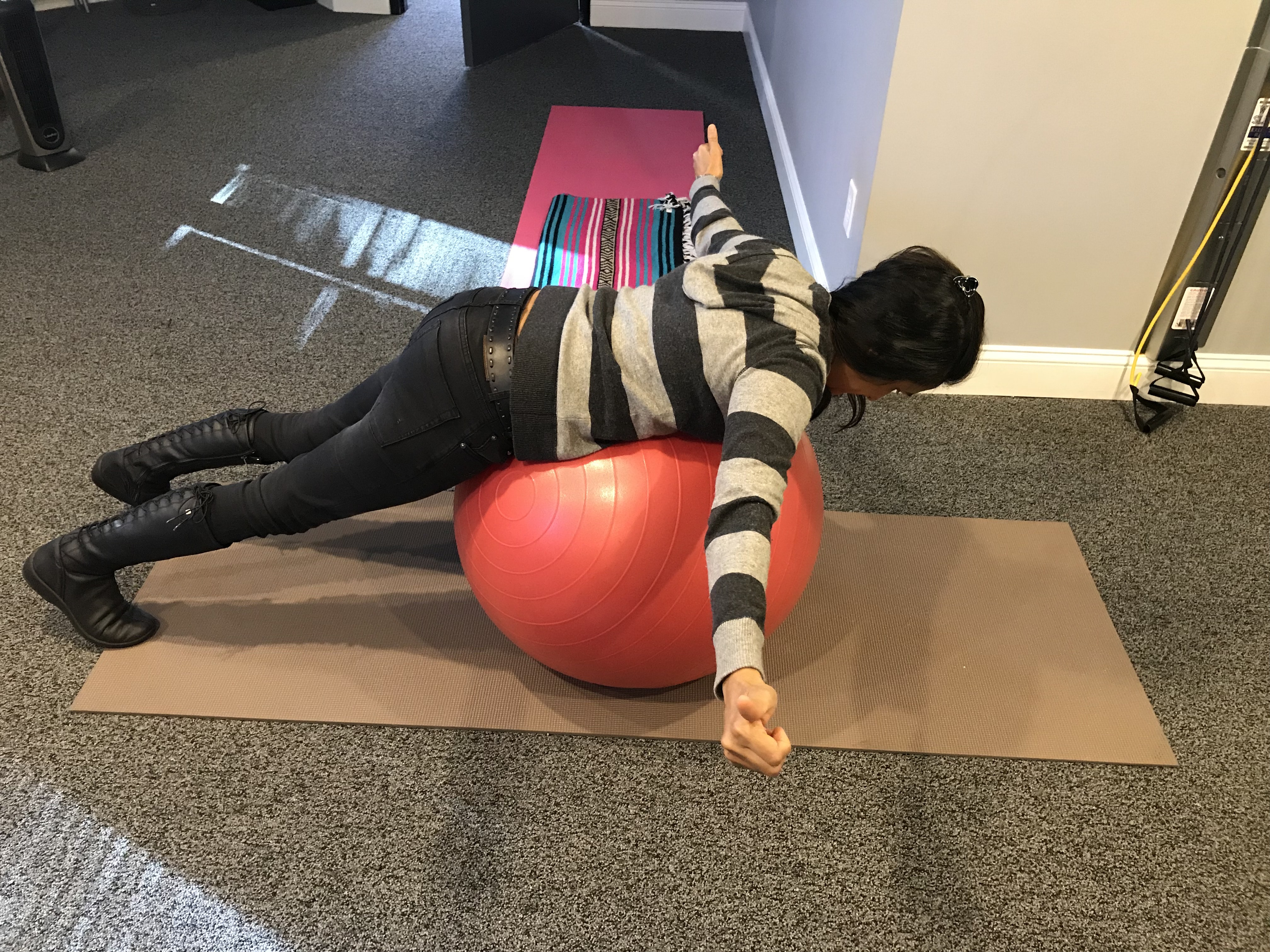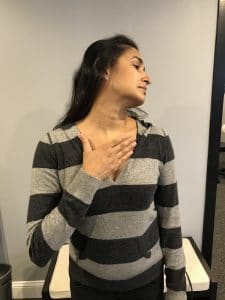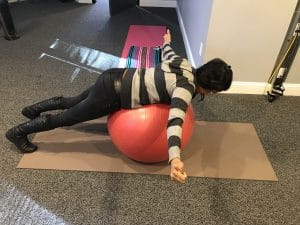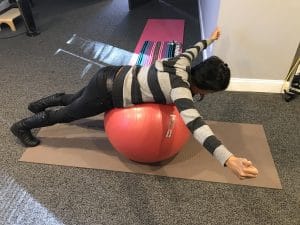
October is breast cancer awareness month. According to BreastCancer.org, approximately one in eight women will develop breast cancer and over 250,000 new cases of invasive breast cancer are expected to be diagnosed in the United States.
The effects of breast cancer treatment – both during and after – can have long term effects on the body. We’ve compiled some physical therapy exercises to help support the healing process for both survivors and those still battling breast cancer.
Whether you’ve had surgery, radiation or both, your body goes into protect mode. In terms of your posture, protection mode means slouching forward or rounding your shoulders inward. This will lead to even tighter soft tissue in the front of the chest (pecs), axilla, and shoulders which can eventually lead to pain or a frozen shoulder.
For good posture and alignment, you want:
It’s not easy to maintain good posture, but being aware is half the battle! If you feel you are having difficulty finding the correct posture / alignment, ask your physical therapist to help you!
A study done in 2008 at the University of Pennsylvania, found that an upper body strengthening program could help lessen the effects of lymphedema, a common complication from breast cancer (Kathryn H. Schmitz, 2009). Building strength also helps with being able to maintain a better postural position and improves overall function and ease of movement.
Breathing is important for obvious reasons, but it also has several other beneficial effects. Practicing diaphragmatic (belly) and lateral rib breathing (breathing into sides or back) can help:
Practicing breathing also helps to calm your mind and clear your head and is used in most mindfulness or meditation practices.
After radiation therapy or breast surgery, there may be a significant amount of scar tissue around the armpit, collarbone, or chest. This scar tissue or connective tissue restrictions can become quite painful and adhered to the muscles, fascia, and bones below. This can limit mobility and further add to a guarded, protective posture.
There are certain scar mobilization techniques that can be used to help move the scar tissue and improve the mobility of the muscle, fascia, and soft tissues. A physical therapist can instruct you in specific scar mobilization techniques that are right for you. However, you can start by very gently trying to desensitize the scar tissue yourself.
To do this:
You may feel some tenderness, but there should be no major pains or bruising. The tenderness should not last very long.
Stretching can be very helpful for preventing the protective posture and allowing the scar tissues to further adhere. Here are a couple of upper body stretches that can be very helpful. All stretches should be held a minimum of 30 seconds and repeated 2-3x/day.
You will feel a stretch across your chest, front of shoulder, and possibly in your armpit. This will stretch your pec major. You can stretch your pec minor by doing the same stretch, but move your hands down to the sides of your body in the doorway with the elbows straight. (See pictures).


You also want to stretch the muscle on the front of your neck because these are connected by fascia to the chest muscles and fascia.
For a scalene stretch:

It is also beneficial to strengthen your upper back to fight off that protective posture, improve your overall ease of being able to move, lift, carry, and to prevent further chest adhesions.
If you have an exercise ball at home, a nice exercise for improving your upper back strength, is called T’s and Y’s:


We hope that whatever stage of diagnosis or healing you are in, you are able to find these tips useful in managing your symptoms. We highly recommend seeing a physical therapist to have a full evaluation of the soft tissues, posture, strength, and functional movement. The physical therapist will also help set goals that are personal to you and your needs to improve your quality of life and return to full function. Call us at Rebalance Physical Therapy if you have any questions!
Article written by Elayne Geba
Citations:
Weight Lifting in Women with Breast-Cancer–Related Lymphedema
Kathryn H. Schmitz, Ph.D., M.P.H., Rehana L. Ahmed, M.D., Ph.D., Andrea Troxel, Sc.D., Andrea Cheville, M.D., Rebecca Smith, M.D., Lorita Lewis-Grant, M.P.H., M.S.W., Cathy J. Bryan, M.Ed., Catherine T. Williams-Smith, B.S., and Quincy P. Greene
N Engl J Med 2009; 361:664-673August 13, 2009DOI: 10.1056/NEJMoa0810118
In-Person and Online Consultations


